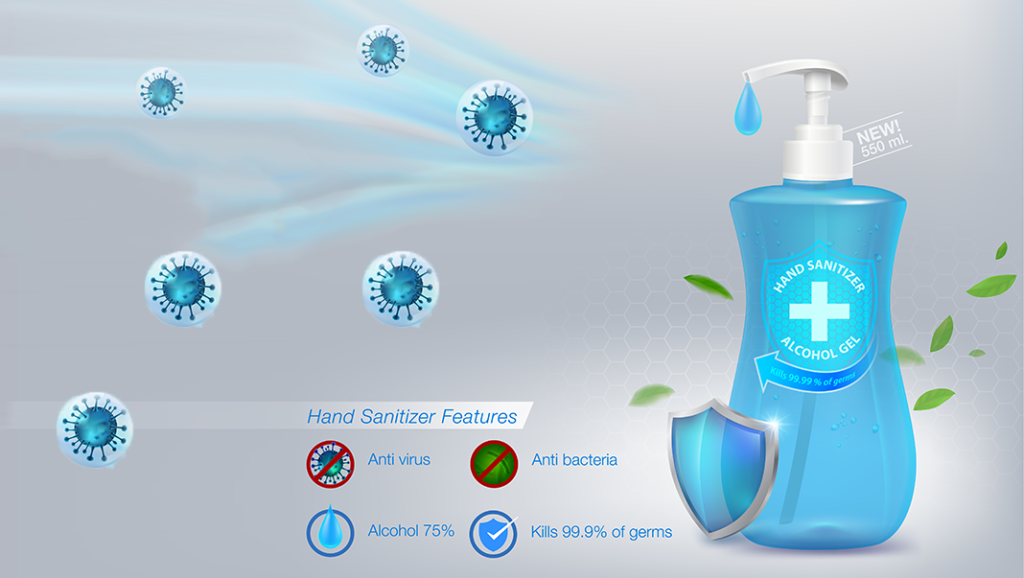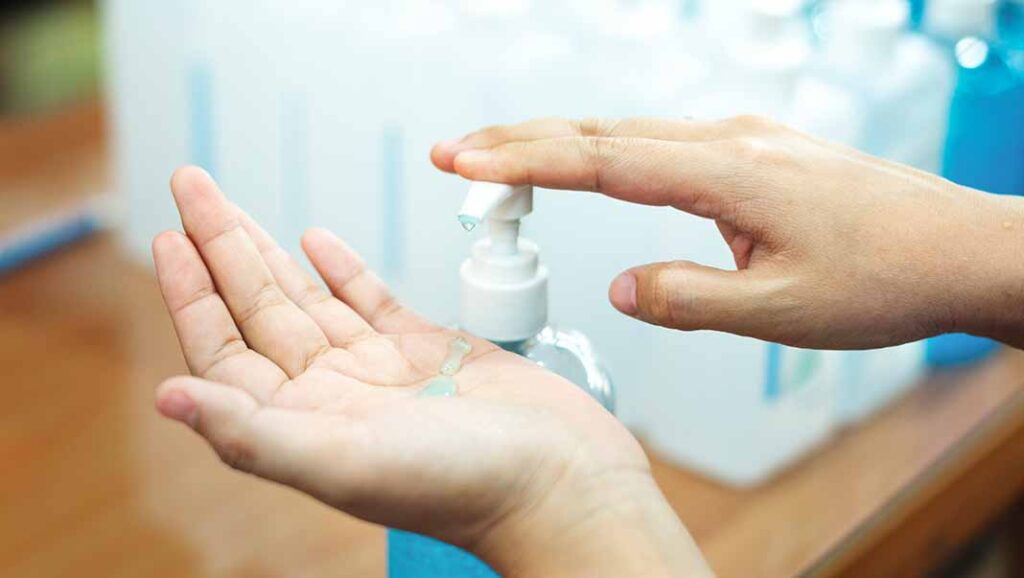
Washing hands with soap, hand sanitizer, and water is the best strategy to avoid COVID-19 infection. However, if soap and water aren’t available, public health officials recommend using an alcohol-based hand sanitizer.
Although washing with soap and running water is still the most effective strategy to reduce bacteria, it isn’t always possible. It is a handy tool for fighting contagious diseases that don’t require a sink. Dispensers should place in easily accessible positions near high-touch surfaces to make the workplace safer.
Many public welfare and health organizations, including the Centers for Disease Control and Prevention (CDC), World Health Organization (WHO), and the United Nations (UN), are working to raise awareness about the precautionary measures and use of hand sanitizer among the largest possible population in order to prevent infection. According to Astute Analytica, the worldwide hand sanitizer market is forecast to grow at a CAGR of 8.6 % from 2022 to 2030.
But when it comes to removing hazardous pathogens like the coronavirus. How gels and sprays are victorious?
Here are some things to keep in mind with hand sanitizer.
For Hand Sanitizers, all germs are not equal:
Microorganisms have huge and diverse biodiversity. As a result, Its’ efficiency varies depending on the bacterium type. It can kill up to 99.99 percent of the bacteria that might cause illness. If COVID-19 is present, however, wash your hands because alcohol will not properly eliminate it.
The most effective alcohol concentration is 60-95 percent.
The Centers for Disease Control and Prevention (CDC) advises utilizing 60-95 percent ethanol or isopropanol (isopropyl) products. Denaturing germs and viruses is how alcohol-based sanitizers operate. Alcohol-free varieties may lessen the number of germs on your hand without completely eliminating them. Microbes cannot be broken down by products with concentrations less than 60%.
As per the study of Emerging Infectious Diseases, low-concentration gels distribute bacteria around without killing them. However, drinking too much alcohol is harmful. Alcohol requires a certain quantity of water to denature cells. Therefore, concentrations exceeding 95 percent are less helpful.
There are methods to Use Hand Sanitizer:

There is an appropriate way to use them, just as there is a way to wash them with soap and water. Alcohol-based hand sanitizers must be rubbed all over the hands until completely dry for them to work (about 20 to 30 seconds). If people rinse or wipe the product off, it will lose its effectiveness.
When used correctly, alcohol destroys bacteria quickly, according to the World Health Organization (WHO). If hands feel dry after being rubbed together for less than 10–15 seconds, it’s likely that there is not enough cream applied.
Hand sanitizers, unlike soap and water, do not dry out the skin.
Hand massages with alcohol are healthier for the skin than soap and water. For example, Purell contains emollients, which nourish the skin, while soap drains it of moisture and oils. Alcohol-based hand sanitizers favor among healthcare personnel, according to the CDC. Doctors and nurses must frequently wash their hands. They are more convenient to use when providing care. It hydrates the skin and is less irritant and drying than soap.
It hydrates the skin and reduces irritation and dryness compared to soap and water. When nurses used this instead of soap and water, they had better skin health and no change in infection rates.
Hand Sanitizer Isn’t a Replacement for Soap:
While they are faster and easier to use than soap and water, they are not a substitute for thorough hand cleaning. When soap and water are not available, the CDC suggests using hand sanitizer. Even if people, for example, use Purell, they must wash their hands after using the restroom, before and after cooking or eating, etc.
After working with chemicals,
If their hands are noticeably filthy.
Hand sanitizer is not a substitute for cleaning goods:
It cannot be a substitute for disinfectant sprays or antibacterial cleaning wipes. According to the Food and Drug Administration (FDA), these treatments intend for “hard, nonporous surfaces,” not human skin.
Nonetheless, some people use them in this manner. In an effort to avoid a coronavirus infection, around one-third of adult respondents in a recent survey engaged in “non recommended high-risk practices” with cleaning supplies, according to a report released by the CDC in early June. These activities included pouring bleach on food, applying cleaning and disinfection solutions to the skin, and inhaling or ingesting cleaners and disinfectants, all of which are dangerous.
Hand sanitizer is potentially hazardous:
When consumed, it can be toxic, especially in children. It can irritate the throat lining and create stomach problems. According to the FDA, “drinking simply a small amount” can induce alcohol poisoning in children. If the child swallows it, call poison control or a doctor directly.
It is combustible as well. Despite the fact that fires caused by alcohol-based hand sanitizers are rare, the CDC urges hospitals, nursing homes, and other health care facilities to keep hand sanitizers safely away from ignition sources. Due to flammability concerns, the US Postal Service prohibits sending alcohol-based hand sanitizer through the mail.
Hand sanitizer prepared at home can be useless:
During this COVID-19 pandemic era, there is no shortage of recipes for DIY hand sanitizer on the internet. However, the FDA, which oversees hand sanitizers, advises that germ-killing gels be left to professionals.
“Hand sanitizer can be useless if prepared incorrectly, and there have been cases of skin burns from homemade hand sanitizer,” the Centers for Disease Control and Prevention (CDC) notes.
Also, adding rubbing alcohol to a container of non-alcohol hand sanitizer will not increase the sanitizer’s effectiveness. According to the FDA, it’s “unlikely to result in an effective product.”
Closing Note:
Hand sanitizers may not be a perfect substitute for proper handwashing, but let’s face it, most people don’t wash their hands properly anyhow. Infections can contain by using dispensers strategically placed around the structure. Look for products with a 60-95 percent concentration and additional moisturizers when buying for the home, school, or office.
Also read: https://zaratechs.com/7-immune-health-products-fixing-the-immune-system/

2 thoughts on “Hand Sanitizer: Things People should learn”